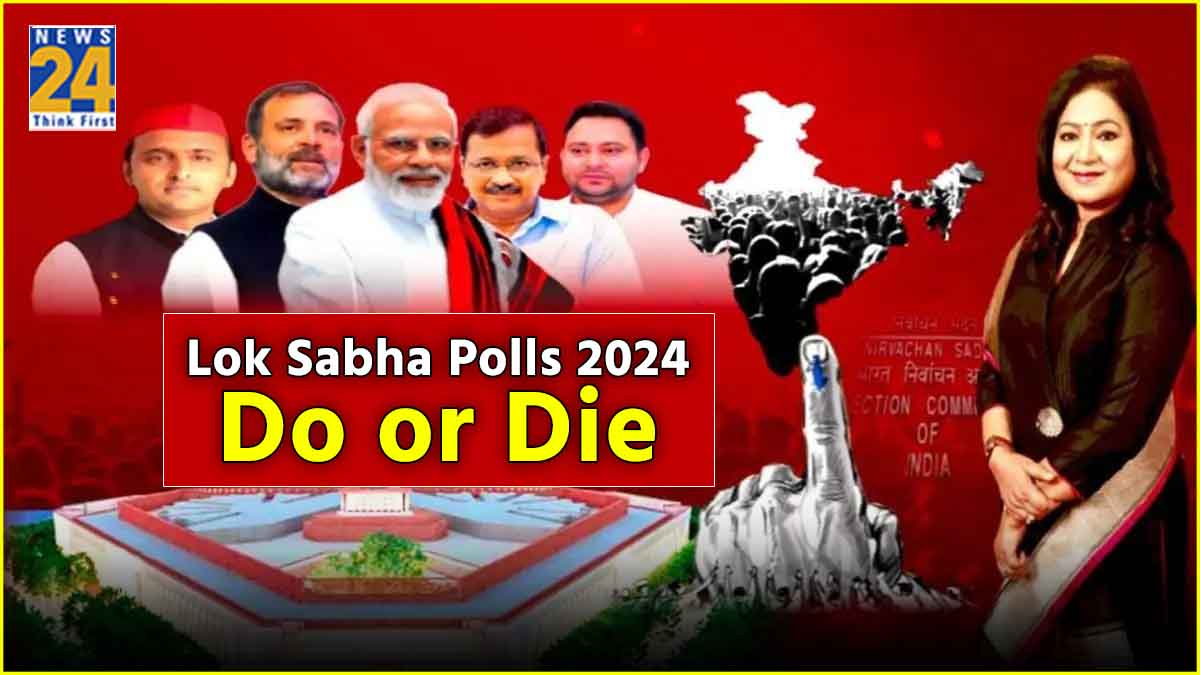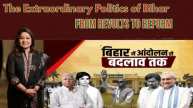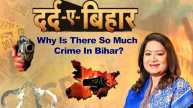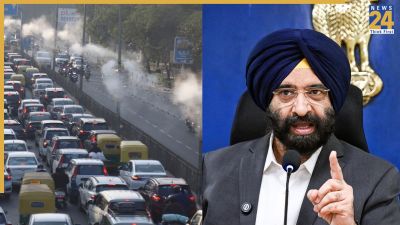What are our political parties thinking about the upcoming general elections in 2024? How are pessimistic, optimistic, as well as pragmatic leaders approaching the given electoral atmosphere? Why has the BJP set a target of 370 plus seats instead of a simple majority for 2024? Why does PM Modi need a two-thirds majority?
What tasks remain on their agenda, for which they seek a special majority to accomplish? Why is it crucial for the Congress to win the battle of 2024? Where does the Congress see its hopes and challenges? What challenges might the party face if its performance does not improve? Similarly, how optimistic or pessimistic are parties like the Aam Aadmi Party, Samajwadi Party, BSP, and RJD about the results of 2024?
What are the ground realities?
During a recent informal conversation, one of the leaders from a party currently out of power was asked about their expectations for the number of seats they could win in the upcoming elections. They responded that it would have been more appropriate to ask about the number of seats where they could give a tough fight. This response, seemingly honest, reflects an assessment of the ground situation. Political pundits are also calculating where strong contests will take place and where results could be surprising. Prime Minister Narendra Modi, in his rallies, often speaks as if he is confident of achieving a massive majority for a third term. He is also discussing targets for after 2024 with officials, setting goals that require an even larger mandate than before.
BJP’s Unfulfilled Promise
For instance, implementing a ‘One Country, One Election’ (Simultaneous Elections) as well as BJP’s promise of ‘One Country, One Law’ yet remains unfulfilled. Bringing the Women’s Reservation Bill passed in Parliament to the ground, making India the world’s third-largest economy, and reforming the recruitment system in the country. However, all these are possible only if the BJP receives a large, very large mandate.
Thus, BJP’s strategy for 2024 is to secure such a large mandate that the opposition cannot play the role of a speedbreaker anywhere.
How Easy is the Path for the Congress?
In December, Congress lost control of Rajasthan and Chhattisgarh. Observing the political winds, stalwarts within the Congress are switching sides. This raises the question: what will happen if Congress’s performance doesn’t improve by 2024? Without power, party workers tend to distance themselves, and raising the necessary funds to run the party becomes challenging. Will the aftermath of the 2024 Lok Sabha elections make Congress’s path easier or more difficult? In politics, nothing is impossible, and a leader’s greatest USP is to remain optimistic in every situation. Let’s take a brief look back—40 years ago, of the 1984 elections. The BJP won only two seats in the Lok Sabha, but its leaders struggled, experimented with new ways to engage people, sidelined major issues to form coalition governments, and has been in power with a strong majority since 2014, governing 12 states in India.
The Aam Aadmi Party: A ‘Successful Startup’
This brings up the question: if the BJP can reach this milestone, why can’t other parties? The 2024 election is crucial for another party—the Aam Aadmi Party (AAP). Had there been an award for the most successful political startup in the last decade, it likely would have gone to AAP, which, using the Delhi model under Kejriwal, also succeeded in Punjab. Team Kejriwal is continuously working on expanding in many states. Politics is about calculating profit and loss, and the script for coalitions is being written. Whether these convenience coalitions will last until the election or collapse midway is hard to say. However, for now, AAP’s strategy seems to aim for the second position in the country’s politics.
Decoding BJP’s Top Leadership
Decoding the minds of Prime Minister Narendra Modi and Home Minister Amit Shah is challenging, but it seems their strategy since 2014 has been to weaken national parties, especially Congress, with BJP veterans working tirelessly towards a Congress-free India. Currently, there seems to be no political party strong enough to challenge BJP for even half of the Lok Sabha seats. Efforts to raise a collective umbrella to stop the Modi tsunami in 2024 have been hindered by internal conflicts. If the BJP achieves its target of 370 plus seats, regional parties, and strong leaders will still pose a challenge, including Mamata Banerjee in West Bengal, MK Stalin in Tamil Nadu, Jaganmohan Reddy in Andhra Pradesh, Naveen Patnaik in Odisha, Hemant Soren in Jharkhand, and Arvind Kejriwal and Bhagwant Mann in Delhi and Punjab, respectively.
What’s the Plan?
In Uttar Pradesh, Akhilesh Yadav, and as is the case in Bihar, Tejashwi Yadav, may be out of power, but they are striving to halt BJP’s triumphal march. If everything goes according to Modi-Shah’s plan in the 2024 elections, regional parties and strong local leaders will be next in line, where BJP awaits power. This election will also be interesting to see which leader fights to win, who is giving a tough challenge, and who is merely going to be a formal participant. While much is awaited, our democracy is replete with a large number of optimistic leaders who are currently waiting for favourable circumstances in 2029.













